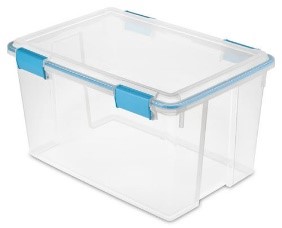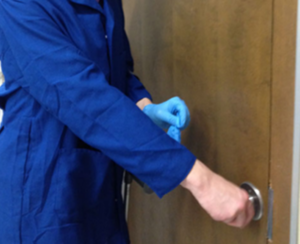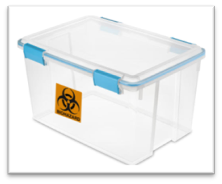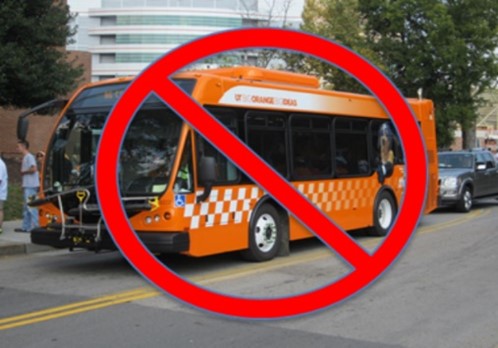UTK Environmental Health & Safety Procedure LS-BIO-006
Effective Date: 06/16/2020
Revision Date: 04/24/2023
Purpose
Transport of biological agents outside of the lab requires lab personnel to take precautions to ensure that lost samples and/or spills in public areas do not occur and that shipping regulations are observed. The purpose of this document is to provide guidance and expected best practices of UTK researchers for the transportation of biological hazards within and between UTK-area buildings and to provide general information for the shipment of biological hazards from UTK.
Scope and Applicability
The biological hazards transportation practices outlined in this document apply to the transportation of biological hazards within and off campus by all UTK-area researchers and laboratory workers.
Definitions and Abbreviations
Definitions
Primary container: a device or container which is in direct contact with a hazardous material and is designed to confine the substance and prevent leaks and spills.
Secondary container: a device or container which can contain hazardous material in case primary containment fails. Secondary containers should provide enough capacity to contain the entire volume of the primary container(s).
Abbreviations
CDC: Centers for Disease Control and Prevention
USDA APHIS: United States Department of Agriculture- Animal and Plant Health Inspection Service
US FWS: United States Fish and Wildlife Service
US DOC: United States Department of Commerce
UTK: University of Tennessee, Knoxville
Procedures and Best Practices
Transporting biohazards within a building
- Use primary containers that are manufactured to contain the material inside and equipped with lids, or tight-fitting stoppers to prevent spills.
- When transporting multiple tubes, place them in a rack or other type of holder that will keep them from shifting or tipping during transport.
- Use a leak-resistant secondary container with a securable lid to contain any leaks or spills while moving through hallways; see Figure 1.

Figure 1: Example of secondary transport container with a securable lid
- Use a cart with secondary containment to transport large volumes of materials or when moving from floor to floor.
- Avoid contaminating common contact surfaces or non-lab areas. If wearing gloves is necessary, use one glove to hold materials while using a clean, ungloved hand for the manipulation of doorknobs, elevator buttons, etc.; see Figure 2.

Figure 2: Touch common surfaces with ungloved hand
Transporting biohazards outside of a building
Follow the guidelines outlined above. Additionally:
- Secondary containers are required and must be leak proof and covered with lid/closure that latches into place.
- The secondary container must contain enough absorbent material (i.e. paper towels, bench pads) to absorb all liquids that could be released in the container.
- “Dead space” in the secondary container should be filled with shock absorbent packing materials (i.e., foam padding, air pillows, etc.) to prevent shifting of contents during transport.
- The outer surface of secondary container must be clearly labeled with contact information and a brief description of contents. A biohazard symbol is required if transporting infectious agents or human derived materials; see Figure 3.

Figure 3: Secondary container labeled with the biohazard symbol
Transporting biohazards in a vehicle
If vehicle transport is necessary:
- Use a designated UTK vehicle if possible.
- Follow packaging as described above for transporting biohazards outside of buildings.
- Place containers in storage areas of vehicles. Tertiary containment is recommended, where tertiary containers are similarly configured as secondary containers.
- Situate containers to prevent shifting during transit.
- Do not take biohazardous agents on campus buses or public transportation; see Figure 4.

Figure 4: Never transport biohazards on public transportation
Before a Lab-Related Trip
- Contact EHS Biosafety before your trip for assistance getting your biological materials to the required destination in a safe manner that meets regulatory requirements.
- Do not attempt to take undeclared biological materials in carry-on or checked baggage on aircraft, trains, ships, or other means of public/commercial conveyance. Doing so may result in substantial civil and/or criminal penalties.
Commercial Transport of Biological Hazards
Shipment of biological agents by courier (i.e., FedEx or UPS) is permissible in most cases. However, commercial shipping is subject to federal and international regulations, and certain packaging and labeling guidelines apply.
Non-regulated items include:
- Low risk or non-infectious organisms or materials
- Sterilized, heat-killed or otherwise inactivated samples
- Patient samples from healthy individuals for routine testing.
Regulated items include:
- Cultures of infectious agents
- Human or animal specimens that likely harbor infectious agents
- Genetically modified organisms (in some cases)
- Biological toxins
- Any materials packaged on dry ice or with liquid nitrogen dry shippers
You cannot submit biohazards for commercial transport unless you have been trained and certified. Training is available from EHS Biosafety for labs that regularly ship materials. Contact EHS Biosafety at 865-974-5084 or utbiosafety@utk.edu for information and training.
Regulatory Permit Requirements
In some cases, transport and/or receipt of biological materials may require permits from U.S. regulatory agencies. Examples include, but may not be limited to the following:
- CDC: Import of infectious agents or disease vectors (arthropods, bats, human or non-human primate materials) that may affect human health
- USDA APHIS: Import and interstate movement of livestock/poultry pathogens; animal blood/tissues; plant pests, plant pathogens, & noxious weeds; foreign soils; genetically modified plants, plant pests, and/or plant pathogens
- US FWS: Import/export of biological materials obtained from wildlife, particularly those obtained from threatened or endangered species
- US DOC: Export of potentially infectious agents affecting humans, animals, or plants from the U.S.
Biological materials permits may take several weeks to months to obtain. Because federal agencies will not make exceptions for your particular research needs, do not wait until the project is imminent to begin the process of obtaining a permit.
Contact EHS Biosafety at 865-974-5084 or utbiosafety@utk.edu for assistance in determining any shipping and/or regulatory permitting requirements that may apply.
References
SA0100 – Safety and Environmental Health Program
SA0700 – Safety and Environmental Health Responsibilities
7 CFR, Parts 300-399 (USDA APHIS Plant Protection & Quarantine; Biotechnology Regulatory Services)
9 CFR, Parts 1-199 (Veterinary Services, Center for Veterinary Biologics)
15 CFR, Part 774 (US Department of Commerce, Commerce Control List)
42 CFR, Part 71 (CDC Import Permit Program)
49 CFR Parts 171-180 – Hazardous Materials Regulations
IATA/ICAO Dangerous Goods Regulations
Biosafety in Microbiological and Biomedical Laboratories (BMBL)
Disclaimer
The information provided in these guidelines is designed for educational use only and is not a substitute for specific training or experience.
The University of Tennessee Knoxville and the authors of these guidelines assume no liability for any individual’s use of or reliance upon any material contained or referenced herein. The material contained in these guidelines may not be the most current.
This material may be freely distributed for nonprofit educational use. However, if included in publications, written or electronic, attributions must be made to the author. Commercial use of this material is prohibited without express written permission from the author.